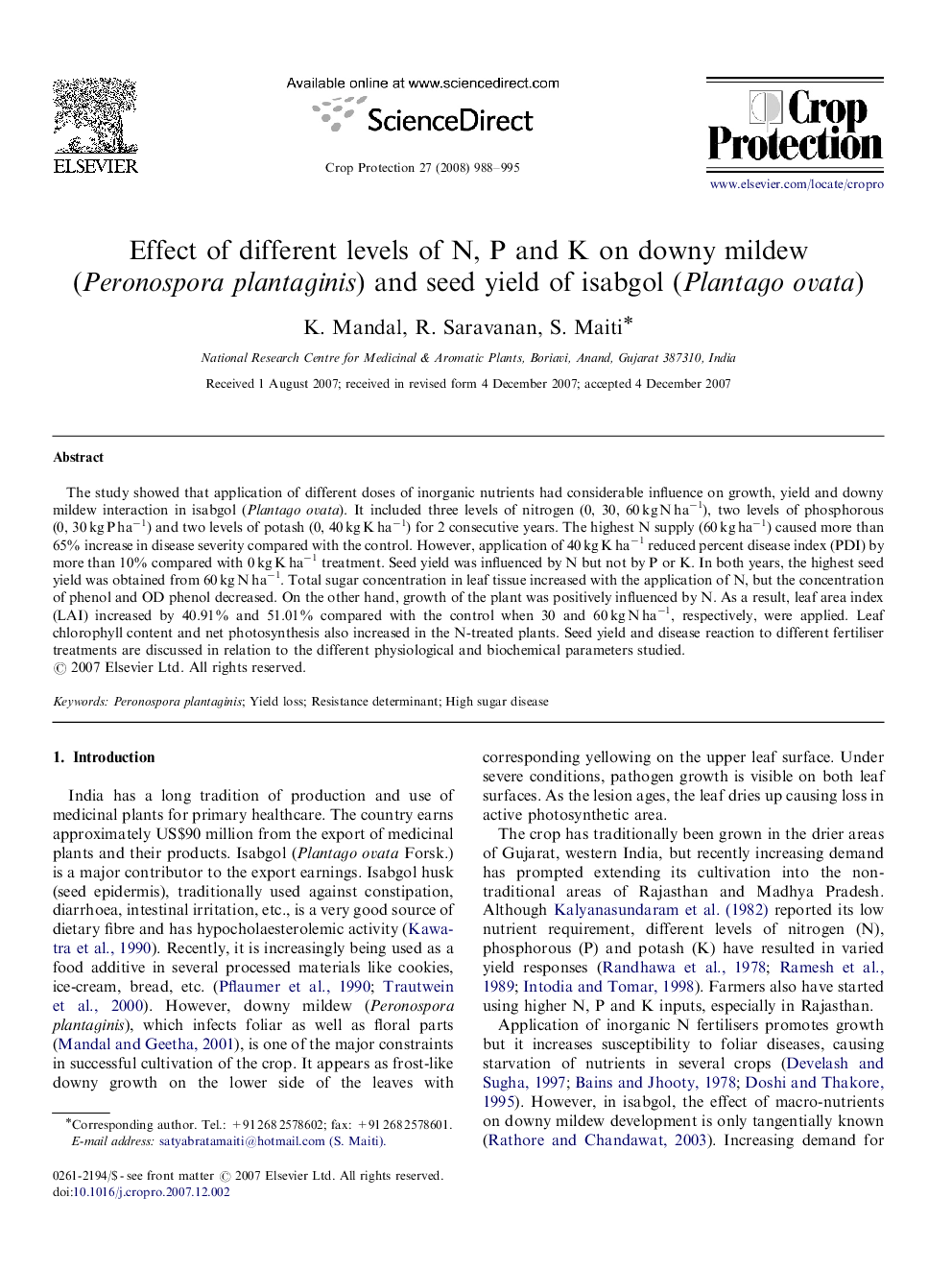| Article ID | Journal | Published Year | Pages | File Type |
|---|---|---|---|---|
| 4507644 | Crop Protection | 2008 | 8 Pages |
Abstract
The study showed that application of different doses of inorganic nutrients had considerable influence on growth, yield and downy mildew interaction in isabgol (Plantago ovata). It included three levels of nitrogen (0, 30, 60 kg N haâ1), two levels of phosphorous (0, 30 kg P haâ1) and two levels of potash (0, 40 kg K haâ1) for 2 consecutive years. The highest N supply (60 kg haâ1) caused more than 65% increase in disease severity compared with the control. However, application of 40 kg K haâ1 reduced percent disease index (PDI) by more than 10% compared with 0 kg K haâ1 treatment. Seed yield was influenced by N but not by P or K. In both years, the highest seed yield was obtained from 60 kg N haâ1. Total sugar concentration in leaf tissue increased with the application of N, but the concentration of phenol and OD phenol decreased. On the other hand, growth of the plant was positively influenced by N. As a result, leaf area index (LAI) increased by 40.91% and 51.01% compared with the control when 30 and 60 kg N haâ1, respectively, were applied. Leaf chlorophyll content and net photosynthesis also increased in the N-treated plants. Seed yield and disease reaction to different fertiliser treatments are discussed in relation to the different physiological and biochemical parameters studied.
Keywords
Related Topics
Life Sciences
Agricultural and Biological Sciences
Agronomy and Crop Science
Authors
K. Mandal, R. Saravanan, S. Maiti,
